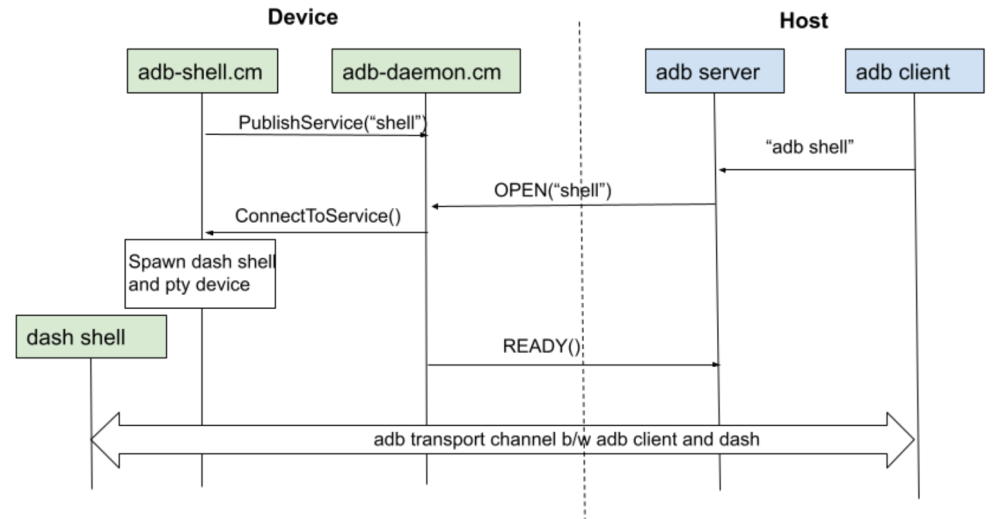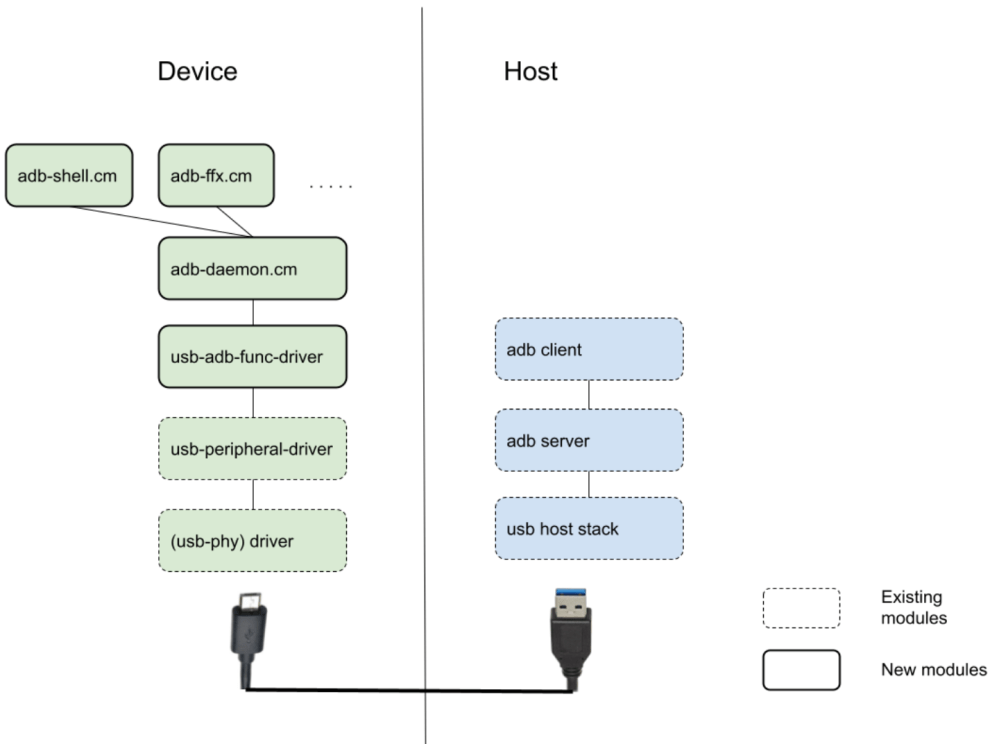
Google’s Fuchsia team has begun a new effort that would allow Fuchsia devices to be managed with the ADB tool, just like an Android phone.
On Android today, developers and enthusiasts are able to access some of the core components of their phones and tablets from their PCs by using ADB. Short for “Android Debug Bridge,” ADB is a critical tool that is, as the name suggests, able to “bridge” your two devices together.
Developers will use ADB to remotely install the latest work-in-progress version of their app to a physical device or even an Android emulator. Even if they don’t ever use ADB commands directly, developers benefit from ADB being deeply integrated into other tools like Android Studio.
Meanwhile, Android enthusiasts and power users use ADB to access their phone’s command prompt, perhaps to enable a mod discovered by the community. You can also use ADB to access the real-time logs from your phone, to help diagnose issues or simply learn more about its inner workings.
More importantly, ADB is able to run consistently well on every major desktop platform — Windows, macOS, and Linux (and by extension ChromeOS) — and that’s an aspect that’s of great interest to Google’s Fuchsia team.
This week, the Fuchsia team shared a new proposal titled “ADB on Fuchsia” that shares the team’s intention to support ADB for controlling devices and the reasoning behind wanting to do so.
At present, the core “fx” and “ffx” tools used to control Fuchsia devices are only compatible with Linux and macOS computers. And while there’s an effort to get ffx running on Windows, that’s not projected to be completed until the end of 2022.
Moreover, even when ffx is supported on all platforms, Fuchsia having support for ADB would continue to be useful in the near future since ADB is a ubiquitous tool. Over the years, ADB has been integrated into many different workflows and automation tools, many of which could instantly begin supporting Fuchsia devices with no change required.
So what would it look like for Fuchsia to support connecting via ADB? One thing that’s important to note is that this doesn’t mean you’ll be able to connect your favorite Fuchsia device — such as your Nest Hub or Nest Hub Max — to your computer via USB. Google has explicitly noted that Fuchsia’s version of ADB “will not be available in user or production builds,” a decision that was made with security in mind.
Instead, ADB on Fuchsia is only intended for working with devices while they’re early in development, making some of those initial stages of development and testing — Google cites “bring-up, engineering, and so on” — possible from Windows devices.
Another notable limitation is that the Fuchsia team currently only intends to “support only a subset” of what ADB can do. Specifically, there are only plans for four particular ADB commands:
- adb shell
- adb logcat
- adb push
- adb pull
As we mentioned earlier, ADB’s “shell” command is used to access the internal command prompt of a (normally Android) device. When used with a Fuchsia device, you’d be able to run the same commands you’d normally access through an ffx shell or by connecting to the device via SSH. Next is “logcat” which, just like on Android, would be able to output all of a Fuchsia device’s logs.

The more interesting ADB commands included are “push” and “pull,” which are used for sending and retrieving files between your two devices. The proposal doesn’t share how exactly this would work on a Fuchsia device, but it would surely be handy during testing.
Internally, all of these ADB commands will be effectively routed to their Fuchsia equivalent, as is somewhat illustrated in an included graphic. In that sense, this support for ADB is really just acting as a compatibility layer.

Overall, it’s intriguing to watch Google connect its different projects together in direct, if subtle ways. While it’s unlikely that most of us will have a need to connect to a Fuchsia device via ADB in the foreseeable future, the addition is still quite interesting.
In some ways, ADB support for Fuchsia also speaks to Google trying to make Fuchsia-first device development easier for the company’s partners — or really anyone who wants to make a device powered by Fuchsia — using the tools they likely already have.
More on Fuchsia:
- Android removes much of Fuchsia-related code as Starnix project progresses
- Nest Hub Max adds Bluetooth settings menu with Fuchsia update
- Here’s the full Google Chrome browser running on Fuchsia [Gallery]
FTC: We use income earning auto affiliate links. More.



Comments